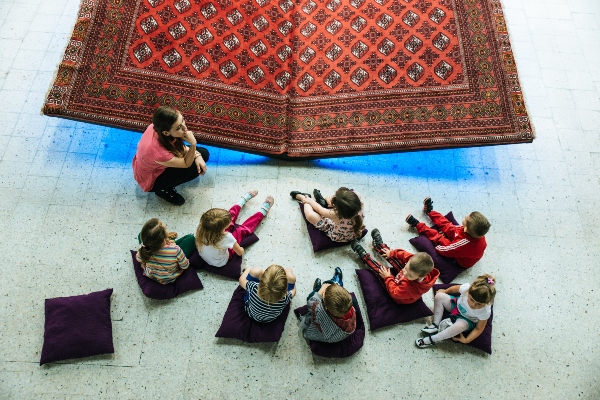Teaching kids the benefits of Yoga
By Bonny Osterhage
After a long hard day at school–where recess doesn’t seem to be a priority with educators anymore–don’t give your child milk and cookies and time in front of the television before launching into more homework. Give your child some constructive downtime–a sort of mental and physical recess–to help him or her relax, de-stress, unwind and learn some helpful ways to make a peaceful transition from work to home. It’s a lesson that will serve children well when they become adults, too. Give them a taste of Yoga.
Yoga helps young people develop better awareness of their own minds and bodies, more self-control, and better flexibility and coordination. It can also teach kids how to stay centered and calm in difficult situations throughout their school day. Some studies have shown that Yoga sometimes helps hyperactive kids and those with attention-deficit issues.
According to Lisa Orkin, a certified Kripalu Yoga instructor, Yoga therapist and occupational therapist who has studied Yoga Therapy at the Vivekananda Kendra Yoga Research Foundation in Bangalore, India, Yoga poses that seem to work especially well are the warrior pose and tree pose. They help instill calm, confidence and balance. “The trick is to get beyond just ‘doing’ the posture. I try to get them to think about what the postures mean, to become like the postures — strong and confident like a warrior. I use partner poses to develop trust.
Working with each other on poses, the children develop team skills. It also fosters bonding,” says Orkin.
“When it comes to relaxation, some children have a difficult time closing their eyes while others can’t get enough. I once had a 10-year-old boy ask me if we could have an extra long relaxation session as he wanted more time to relax. One technique that encourages relaxation is visualization. At first I may have them focus on belly breathing and listening to relaxing music. Then I may ask them to imagine that they are at the beach, playing their favorite sport, or doing some other activity that they like. At the end of the relaxation exercise, I encourage the children to share their own experiences.
Another approach is to create a guided visualization or story with a calming theme of some kind. The idea is to instill a sense of peace and feeling of oneness with nature,” says Orkin.
“There is such a wealth of knowledge we can offer our children with the practice of Yoga,” advises Orkin.
So next time your child comes home and heads to the computer, video game, or television right after school–take a deep breath and get in position to teach them a little bit about Yoga. Take a class together; try poses, or asanas, that you’ve read about. Give them a “time out” and make that time a moment for meditation and Yoga. Calm yourself–and your kids.






